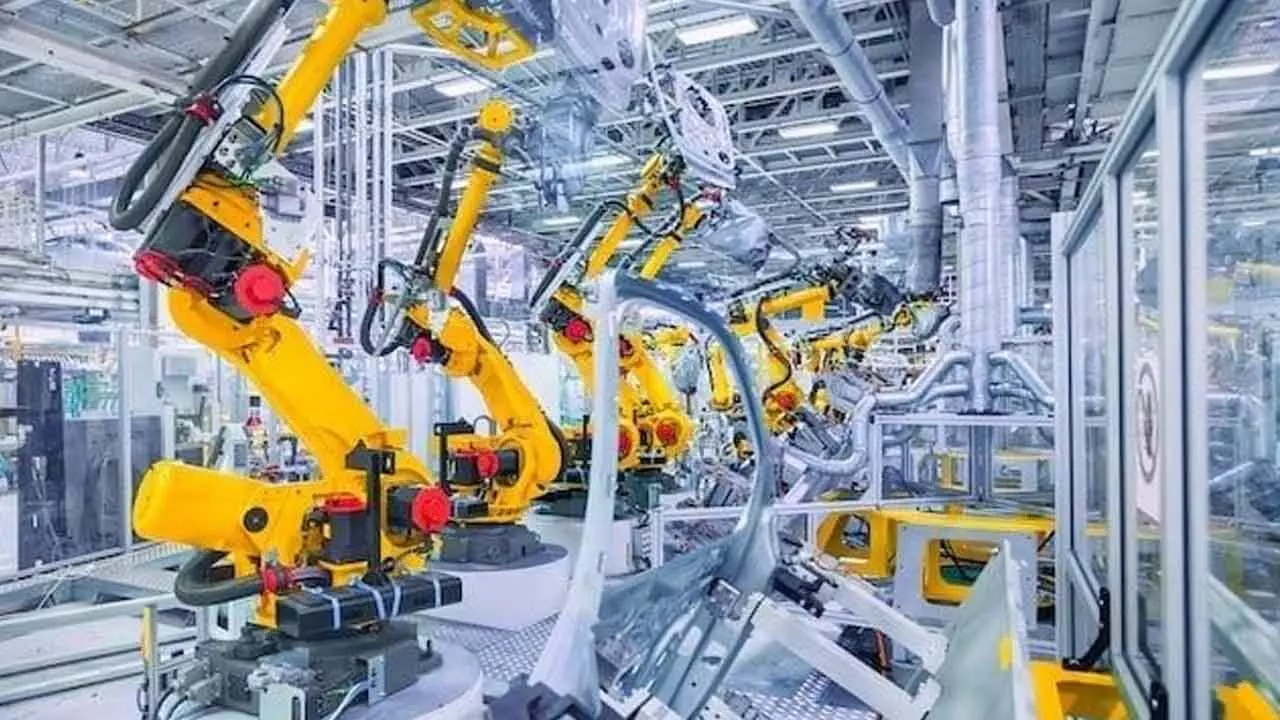Mfg Sector Lifeline To India’s Exports
Domestic manufacturing sector expected to be $1 trn economy by 2025
Mfg Sector Lifeline To India’s Exports

The roadmap focuses on localization, entrepreneurship, and technological self-reliance, aiming for a more robust and competitive manufacturing sector. Specific initiatives like ‘Make in India 2.0’ and ‘Skill India’ are crucial for achieving these goals
The Indian manufacturing sector, aiming to reach a $1 trillion economy by 2025, is being guided by a roadmap focusing on localization, entrepreneurship, and technological self-reliance. India’s manufacturing roadmap aims to leverage the country’s strengths and address weaknesses to achieve significant export growth, particularly in sectors like hand and power tools. The roadmap focuses on localization, entrepreneurship, and technological self-reliance, aiming for a more robust and competitive manufacturing sector. Specific initiatives like ‘Make in India 2.0’ and ‘Skill India’ are crucial for achieving these goals.
It also highlighted in its latest research report, titled ‘India Forward: Transformative Perspectives’, that India is ramping up its push for alternative energy to build a cleaner, self-reliant transport future in which biofuels will play a central role. This push offers a triple win for the country through strengthening energy security, lowering greenhouse gas emissions, and enhancing rural incomes, the report said.
Over the past three decades, India has grown significantly in scale and international influence, the reported noted. Its core sectors—manufacturing, agriculture and services—have grown in step with demographic shifts and structural changes, and will see demand grow as the economy advances, it said. Meanwhile, an analysis of S&P Global Market Intelligence’s Strategic Opportunity Index shows India has made notable gains in competitiveness, especially in attracting global investment to its manufacturing sector.
“Energy will be a key thread that will enable the performance and viability of all sectors in India,” the report said. “Cross-cutting themes will span security and reliability, in the larger framework of a more market-oriented and globally integrated economy,” it added.
However, India continues to lag in the resource availability momentum score, registering 69.4 out of 100. This score measures the cost and availability of two key inputs: labour and finance.
“This is primarily due to the relatively low score of the labour component (50 out of 100), as the availability of labour with the required skills for value-added manufacturing remains a significant challenge that hinders India’s competitiveness,” the report said. “The targeted skill development initiatives (e.g., for semiconductors and solar photovoltaic cell manufacturing) underway may take some time to translate into an improvement in the score,” it added.
Meanwhile, with exploration activity dwindling around the world, many producers are looking at India, which presents an investment opportunity as a major growth market.
“Looking forward, how India prepares for potential supply-chain disruption will be an indicator to watch. The largely benign global oil price environment rewards India’s import strategy, but energy security now goes beyond physical supply security,” it added.
Prioritizing job creation and value addition within India, with a focus on local entrepreneurship and technological capabilities. Emphasis on building a foundation for locally anchored innovations and capabilities.
Expanding industrial corridors and smart cities to facilitate integration and promote advanced manufacturing practices is progressing.
Specific initiatives are underway in areas like aerospace components, electronics, and pharmaceuticals.
The Manufacturing Mission is a planned executive policy backed by policy initiatives, industrial collaboration, and infrastructure development to enhance India’s manufacturing capabilities. Indian MSME’s employ over 7.5 crore people in around 1 crore registered MSME’s, generating 36% of our manufacturing. MSME’s are responsible for 45% of India’s export, hence, the ‘Manufacturing Mission’ government aims to enhance MSME’s investment and turnover limits by 2.5 and 2 times, respectively. An increase in government investment will financially and structurally support the manufacturing sector to increase its productivity and generate more employment.
Enhancing competitiveness through strategic FTAs, export incentives, and infrastructure improvements. The challenges are Infrastructure and connectivity issues, complex regulations, skilled labor shortages, supply chain and technology gaps, and financial and institutional constraints. The tools sector, with its potential to become a reliable manufacturing alternative to China, offers a significant opportunity. The global pharmaceutical outsourcing market also presents a significant growth opportunity for India. In April 2025, NITI Aayog and the Foundation for Economic Development jointly published the report “Unlocking $25+ Billion Exports: India’s Hand & Power Tools Sector”, laying out a comprehensive roadmap to scale up India’s global exports from the current $1 billion to over $25 billion by 2035.
Aerospace exports from India are currently valued at under $2 billion. The newly formed Aerospace India Association (AIA)aims to increase India’s aerospace market share from less than one per cent currently to 10 per cent, boost commercial aerospace supply chain exports from under $2 billion to $20 billion, and raise in-country value addition in exports from approximately 30% currently to 60 per cent,” it said in a press statement. India’s current export footprint in this sector remains modest, yet it possesses key strengths—low-cost labor, strategic trade positioning, and a growing manufacturing base—that offer significant potential to transform the nation into a competitive global player.

